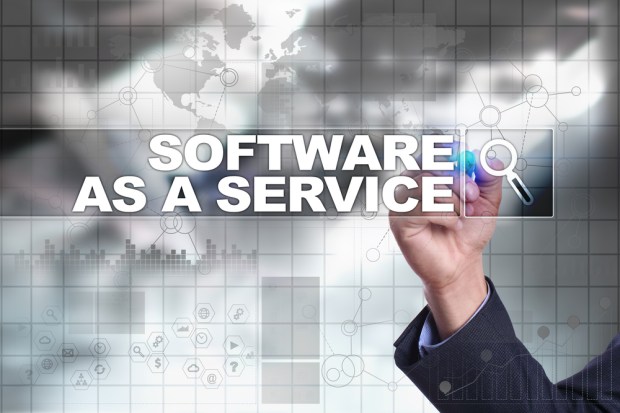The New Challenges Of Old(ish) SaaS

The Software-as-a-Service (SaaS) boom was grabbing headlines left and right a few years ago, but while the hype may have waned, SaaS is more popular than ever in the enterprise. As corporates continue along their digital transformation journeys, adopting cloud-based solutions is now the norm for many businesses. It can quickly turn into a deluge of data, unused solutions and wasted money on subscriptions, though, says Eric Christopher, CEO of startup Zylo.
This week, Zylo announced it secured new venture capital to the tune of $9.3 million. The Series A funding was led by Bessemer Venture Partners, while Salesforce Ventures, the Slack Fund, High Alpha Capital, GGV, SV Angel and Hyde Park Venture Partners also participated.
The funding signals investors’ support not for Software-as-a-Service, but for the management of SaaS solutions. Zylo provides a platform for companies to manage all of these tools in a single portal and ensures employees are using SaaS tools to their most optimal levels.
According to Christopher, on average, Zylo customers have more than 400 cloud subscriptions.
“Many of them were adopted in the past few years now that the cloud is standard,” he recently told PYMNTS. “In all cases, each company is behind on developing a process and resources to manage SaaS subscriptions, causing a new set of challenges, such as unused software, overlapping categories of software and lack of visibility into what software a company has purchased.”
The influx of SaaS in the enterprise hasn’t spared small businesses (SMBs) either. Research released from Blissfully for Q3 2017 found that the rate of SaaS adoption among SMBs doubled after 2014 and quadrupled since 2015. The average small business spends more than $15,500 every month on SaaS, the report found, also noting significant growth in SaaS spend since 2014.
There are a lot of hands that touch these tools too. According to Blissfully, one in seven employees is identified as the billing owner of a SaaS subscription at an SMB.
“Pushing SaaS ownership and management throughout the organization is empowering and can lead to better products and decisions,” Blissfully’s report stated. “However, this can also lead to SaaS chaos, creating potential security risks and financial waste.”
Christopher echoed this challenge, which stems from the proliferation of SaaS within an organization.
“SaaS is great because it’s easily purchased and set up,” he said. “But it creates a new set of challenges, because every employee can be a buyer simply by swiping a credit card. So there’s really not a system of record for subscription software, meaning most companies aren’t tracking what software they have — a huge visibility issue. SaaS subscriptions are recorded inaccurately, or not at all.”
The ease with which any employee can purchase software on behalf of a company means a lot of money goes out the window. A 2016 report by software firm 1E found that companies waste a collective $28 billion on enterprise software that is downloaded but never actually used.
“The inability of organizations to reduce average waste levels suggests that they remain unaware of the underlying cost-saving opportunities,” said the report’s co-author, Buffi Neal, in a statement at the time.
According to Christopher, only 40 percent of SaaS can be tracked by the IT department or by a group of professionals responsible for IT spend.
“The gap between the spend that IT is aware of, and the spend that it isn’t, is where software is going unmanaged,” he said. “This leads to unnecessary spend and security gaps.”
A 2015 white paper from Intel highlighted the importance of monitoring SaaS activity to prevent cloud-based solutions from becoming a cyber threat on the enterprise. According to the company, a focus on identity and access management, data controls and logging and monitoring controls are critical to ensure that SaaS is used correctly by the appropriate users. But when an employee goes rogue and procures a cloud-based subscription tool, understanding how the employee uses that solution becomes less important than actually knowing that solution is being used in the first place. A lack of visibility can lead to exposure of sensitive company data.
“One of the most important things any organization can do to create a secure environment is to invest in one system of record to manage every subscription that captures key information, including who has access, who owns it, security compliance and more,” explained Christopher. “If you don’t know this information, you have a major security risk on your hands.”
SaaS may be out of the headlines, but the industry that has historically seen massive spikes in company spend is likely to continue its takeover of the enterprise — and likely to overburden executives while it’s at it.
Christopher noted that as B2B technologies grow more sophisticated, the SaaS tools that deploy them are giving rise to even more nuanced challenges in how to manage the subscription boom.
“SaaS adoption has historically been about the number of logins or activity metrics — such as those used in MarTech [marketing technology] SaaS — like emails sent or ads placed,” the executive noted. “The sophistication of new technologies like blockchain and AI are making usage metrics much different and complex. Many new SaaS tools are based [on] metrics such as APIs processed and data consumed … We are only at the very beginning of this trend.”
